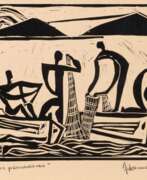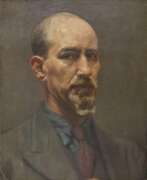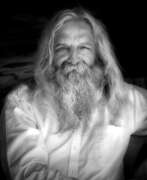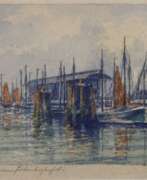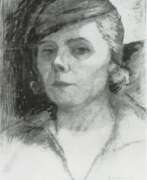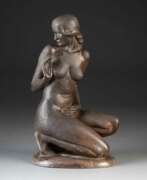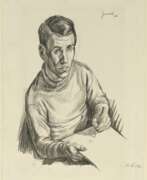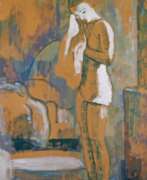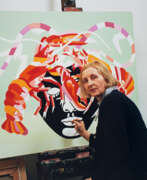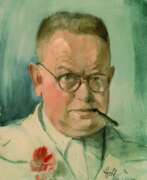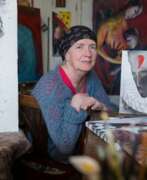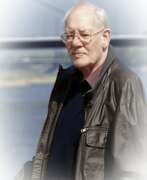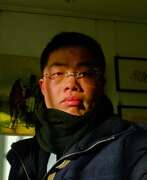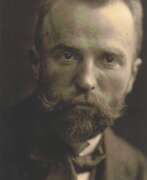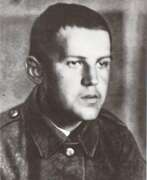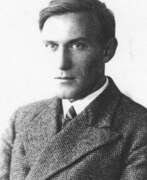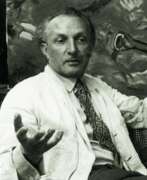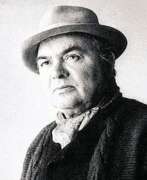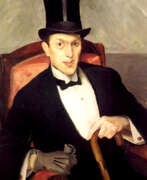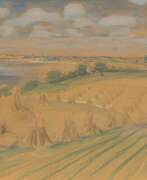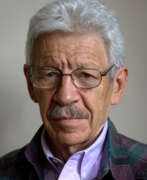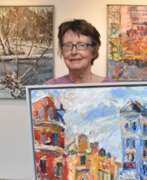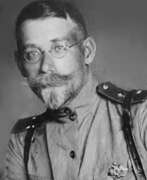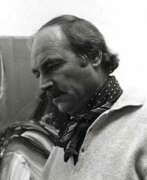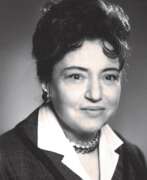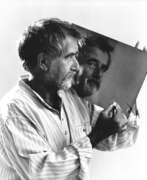Graphic artists Nude art
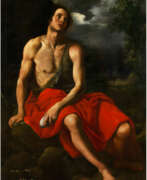

Cristofano Allori was an Italian painter of the late Florentine Mannerist school, painting mostly portraits and religious subjects. Allori received his first lessons in painting from his father, Alessandro Allori, but becoming dissatisfied with the hard anatomical drawing and cold coloring of the latter, he entered the studio of Gregorio Pagani. When still young he became a court portraitist for the Medicis, though many of his commissions were replicas of portraits by his predecessor Bronzino, or had participation by others.[citation needed. His pictures are distinguished by their close adherence to nature and the delicacy and technical perfection of their execution. His most famous work, in his own day and now, is Judith with the Head of Holofernes.
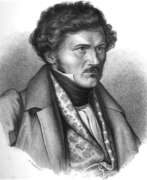

Samuel Amsler is a Swiss engraver. He studied his art under Johan Heinrich Lips and Karl Ernst Hess, at Munich, and from 1816 pursued it in Italy, and chiefly at Rome, till in 1829 he succeeded his former master Hess as professor of engraving in the Munich academy. The works he designed and engraved are remarkable for the grace of the figures, and for the wonderful skill with which he retains and expresses the characteristics of the original paintings and statues. He was a passionate admirer of Raphael, and had great success in reproducing his works.
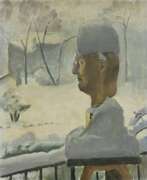

Maurice Paul Jean Asselin was a French painter, watercolourist, printmaker, lithographer, engraver and illustrator, associated with the School of Paris. He is best known for still lifes and nudes. Other recurring themes in his work are motherhood, and the landscapes and seascapes of Brittany. He also worked as a book illustrator, particularly in the 1920s. His personal style was characterised by subdued colours, sensitive brushwork and a strong sense of composition and design.
He was awarded the rank of Officier de la Légion d'honneur in 1939.
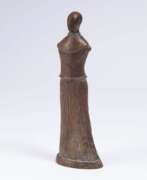

Edgar Augustin was a German painter and sculptor.
Augustin studied sculpture in Münster with Karl Ehlers, then was a pupil of the master Gustav Zeitz in Hamburg. His oeuvre includes partly abstract figurative representations in bronze, wood and plaster as well as paintings, drawings and graphics. Some of Edgar Augustine's sculptures are located in public spaces in Hamburg and other cities.
Edgar Augustin was a member of the Free Academy of Arts in Hamburg and the Special Association of Artists in Germany. In the second half of the 20th century, Augustin was one of the pioneers of figurative wood sculpture and is considered its most important representative.
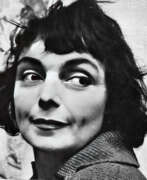

Bele Bachem (real name Renate Gabriele Bachem) was a German painter, graphic designer, book illustrator, interior designer and writer. In 1997 Bachem was awarded the Order of Merit of the Federal Republic of Germany.
Bachem is considered one of the most important post-war German artists and one of the few surrealists in the illustration of German literature.
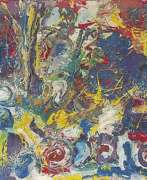

Ernst Rudolf Baerwind was a German painter. Baerwind studied at the art academies in Munich, Berlin and Paris. Baerwind's work was initially based on early German Expressionism. After a surrealist phase, he was influenced in Paris by the painting of the École de Paris and by Informel and then found his way to the International Style.


Vladimir Georgievich Bekhteev (Russian: Владимир Георгиевич Бехтеев) was a Russian artist and painter, born in 1878 and passing away in 1971. His journey into the art world led him from Russia to Munich on the advice of Sergei Jawlensky, where he was deeply influenced by the artistic and intellectual environment of the city, particularly through his connections with the Jawlensky household and the vibrant café culture. Bekhteev's early works, such as "Autumn Alley" (1905), showcase his assimilation of late Impressionist techniques and the influence of Van Gogh, reflecting a period of significant artistic development during his time in Germany.
Bekhteev's art gained recognition and was collected by prominent figures in the avant-garde art scene. His participation in exhibitions reflects a broad interest in various subjects, from landscapes to memories of Africa, demonstrating his versatility and curiosity as an artist. His works have been featured in international exhibitions and have fetched notable prices at auctions, indicating a continued interest and appreciation for his contributions to Russian and European art.
For collectors and experts in art and antiques, Bekhteev's works represent an intriguing intersection of Russian and European artistic movements in the early 20th century. His unique approach to color, form, and subject matter offers a distinctive perspective within the broader context of Impressionist and post-Impressionist art.
To stay updated on sales and auction events related to Vladimir Georgievich Bekhteev, signing up for updates is highly recommended. This subscription will ensure that enthusiasts and collectors are promptly informed of new opportunities to acquire pieces by this distinguished artist.


Lucie Bennett is a British artist and graphic artist known for her provocative depictions of female silhouettes.
Many of Lucie Bennett's works are inspired by the similarities she has discovered between plant forms and the ornate structures of the human body's internal organs. The artist uses simple, elegantly applied lines and blocks of color to create distinctive works of art.
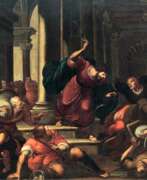

Giulio Benso was a Genovese painter of the early Baroque. He is known as one of the followers of the style of Luca Cambiasi. Initially under the patronage of Giovanni Carl Doria, he met Giulio Cesare Procaccini and was encouraged to study in the Genovese Accademia del Nudo. Afterwards, he was apprenticed to Giovanni Battista Paggi. Apart from his work in Liguria, he decorated the Palazzo Grimaldi in Cagnes-sur-Mer with the Fall of Phaeton and sent works to the Abbey of Weingarten in Germany. In the 1640s, he completed his masterpiece, a fresco in the presbytery and apse of the church of the Basilica della Santissima Annunziata del Vastato. There are also paintings of his in his hometown of Pieve di Teco as well as in the parish church of Sant'Ambrogio in Alassio.
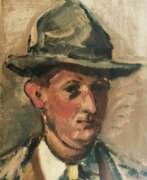

Ludwig Bock was a German painter and graphic artist, draughtsman, and illustrator.
He studied painting at the Munich Academy and was a member of the Munich Secession. Bock's work was influenced by Matisse and Cézanne, as well as by the artists of the Scholl circle. His watercolors, painted mainly in Paris and inspired by the Impressionists who lived there, depict landscapes, folk and fair scenes, and nude scenes.


Volker Böhringer was a German painter and graphic artist.
He was a significant representative of the "New Objectivity. In his paintings and graphics Böhringer turned to socially critical representational themes, the theme of his early works being industrial landscapes. Böhringer refused to join the League of German Artists (VBKD), so he was forbidden to exhibit his work. Despite his secluded life, he received critical acclaim, and his work was shown in major public exhibitions of German modern art at the Art Museum Basel in 1937 and in Zurich in 1949. In the 1950s he increasingly turned to religious themes in his paintings.
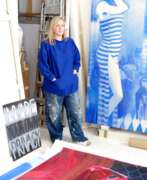

Lisa Brice is a South African painter and visual artist from Cape Town. She lives in London and cites some of her influences as her experiences growing up in South Africa during a time of political upheaval, and from time spent living and working in Trinidad.
Her work is held in collections around the world, including the Smithsonian National Museum of African Art, Johannesburg Art Gallery, The Whitworth, the High Commission of South Africa, London and the private collection of Sindika Dokolo.


Arthur Brusenbauch was an Austrian painter. Arthur Brusenbauch learned from Johann Kautsky and then worked as a stage decorator himself. He studied in Vienna at the Staatsgewerbeschule and the Academy of Fine Arts, interrupted by military service and imprisonment. In 1920 he became a member of the Vienna Secession, and in 1939 he moved to the Künstlerhaus. In 1928 he had represented Austria in the art competitions of the 1928 Olympic Games. From 1937 to 1941 he participated in all major German art exhibitions in Munich with seven oil paintings. There, in 1939, Hitler acquired the picture of Melk an der Donau in festive decorations. Brusenbauch, who is attributed to late impressionism, dealt with fresco painting and graphics.
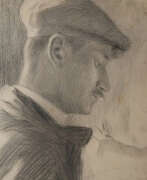

Georg Burmester was a German artist of the late 19th - first third of the 20th centuries. He is known as a painter, graphic artist, impressionist, representative of the Düsseldorf art school, and teacher.
Burmester worked mainly in the genres of landscape and marinas, but among his works there are also still lifes, as well as works in the genre of nude. He was a teacher at the Kassel Art School from 1912 to 1930 and was promoted to the rank of professor in 1917.
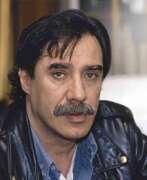

Luis Caballero Holguín was a Colombian painter, watercolourist, pastellist and lithographer. Caballero is known for depicting masculine figures, which often include both erotic and violent imagery. He is viewed as one of the most important figures in Colombian art.


Jean-Pierre Cassigneul is a French artist known for his stylized paintings of women in fashionable clothing and elegant interiors. He was studied at the École Nationale Supérieure des Beaux-Arts in Paris.
Cassigneul's paintings often feature women with long necks, almond-shaped eyes, and vividly colored clothing set against simple yet elegant backgrounds. He has been influenced by the work of Henri Matisse, Pierre Bonnard, and Edouard Vuillard, as well as Japanese woodblock prints.
Cassigneul's work has been exhibited in galleries and museums around the world, including the Tokyo Museum of Modern Art, the National Museum of Fine Arts in Buenos Aires, and the Museum of Modern Art in Paris. His paintings are also held in the collections of many prestigious institutions, including the Musée d'Art Moderne de la Ville de Paris and the Museum of Modern Art in New York.
In addition to his paintings, Cassigneul has also worked in other media, including lithography and book illustration. He has created illustrations for works by Gustave Flaubert, Paul Verlaine, and Charles Baudelaire, among others.
Cassigneul continues to work and exhibit his art today, and is considered one of the leading figures of the contemporary French art scene.
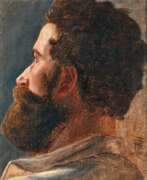

Hans Christiansen was a German painter, representative of classical modernism, decorator and illustrator.
Christiansen trained as a decorative painter in Flensburg and then at the School of Applied Arts in Munich, later studying at the Académie Julian in Paris. After a study trip to Italy in 1889, he moved to Hamburg, where he taught at the Technical University.
At the same time, Christiansen worked as a freelance decorative artist and was active in the Volkskunst-Verein, and was one of the founders and first residents of the Darmstadt artists' colony of the late 19th and early 20th century. Together with Josef Olbrich and Peter Behrens, he designed furniture, ceramics, tapestries, stained glass and graphic posters. He also designed his own house in the colony, which he called "Villa Rose," which was destroyed during World War II.
During this time, the versatile artist also wrote regularly for the magazine Jugend, creating many illustrations and covers. From 1911 he lectured at the Wiesbaden School of Arts and Crafts and was a member of the Wiesbaden Free Artists Association.
In 1933, Christiansen's work was banned by the Nazi Party of Germany because of his Jewish wife, and he was almost forgotten until his death in 1945.




Alfred Jean Andre Cluysenaar was a Belgian Portrait painter. Jean Alfred was a member of the Cluysenaar family, an artistic family from Brussels. He became the father of the painter André Cluysenaar. He studied in the Académie Royale des Beaux-Arts of Brussels in the atelier of Joseph Jaquet and François-Joseph Navez. He painted some important decorations in the Royal Zoo of Antwerp and in 1861-1876 he ornated the Aula in Ghent. Cluysenaar was famous for his monumental decorations of high quality. Awarded in the expositions of Brussels, Ghent, Paris Vienna and London. Some of his paintings are kept in the Royal Museum of Fine Arts Antwerp.


Charles Edward Conder, an Anglo-British painter, was a pivotal figure in the Australian art scene, known for his significant contributions to the Heidelberg School and the famous 9 x 5 Impressions Exhibition. Born in England in 1868, Conder's artistic journey began in earnest when he moved to Australia, where he immersed himself in the country's landscapes and developed a unique style that melded his natural instinct for color and design with the influences of his contemporaries and the environment.
Charles Edward Conder's time in Australia was marked by collaborative efforts with other notable artists, including Tom Roberts and Arthur Streeton, with whom he shared a studio and participated in the notable 9 x 5 Impressions Exhibition. His work during this period, characterized by a distinctive use of color and form, captured the essence of the Australian landscape while reflecting his personal artistic sensibilities.
In 1890, Charles Edward Conder's artistic pursuits took him to Europe, where he studied in Paris and mingled with prominent artists and writers of the day. His work continued to evolve, embracing the influences of Aestheticism and the Bohemian lifestyle he led. Despite his artistic success, Conder's life was marred by health issues, including the effects of syphilis, which he contracted early in his career. His later years were spent in a struggle with the disease, culminating in his death in a sanatorium in 1909.
Today, Conder's legacy is preserved in his contributions to Australian art and the influence he had on his peers and successors. His works continue to be celebrated for their beauty, emotional depth, and the unique perspective they provide on the landscapes and culture of Australia during his time.
For those interested in delving deeper into the life and works of Charles Edward Conder, his art remains a testament to his skill and vision, offering a window into the vibrant art scene of his era and the landscapes that inspired him.
If you're captivated by the unique blend of Australian landscapes and European artistry in Charles Edward Conder's work, or if you wish to discover more about the Heidelberg School's influence on art and culture, we invite you to sign up for updates. Stay informed about upcoming exhibitions, sales of Conder's works, and exclusive insights into the world of art collecting. Don't miss the opportunity to deepen your appreciation for one of the luminaries of Australian art.
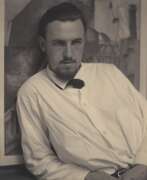

Konrad Cramer was a German-born American painter. He was trained at the Academy of Fine Arts in Karlsruhe, and he emigrated to the United States in 1911. A naturalized U.S. citizen, he is "often credited as being an important link between German and American modernism in art."
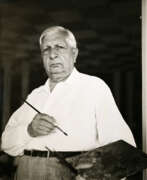

Giuseppe Maria Alberto Giorgio de Chirico, an Italian artist renowned for his profound influence on the Surrealist movement, stands as a seminal figure in 20th-century art. Born in Volos, Greece, in 1888, de Chirico was a visionary painter, sculptor, and writer whose works profoundly altered the landscape of modern art. His paintings, characterized by their dreamlike quality, enigmatic compositions, and the juxtaposition of classical and modern elements, delve into the mysteries of the subconscious, exploring themes of nostalgia, metaphysics, and the uncanny.
De Chirico's art is distinguished by its unique blend of classical motifs with surreal, dreamlike atmospheres, creating a sense of profound mystery and unease. His most famous works, such as "The Enigma of an Autumn Afternoon" and "The Melancholy of Departure," exhibit deserted cityscapes filled with elongated shadows, enigmatic figures, and classical architecture, which became hallmarks of his style. These paintings not only prefigured the Surrealist movement but also influenced countless artists with their exploration of the psyche, the distortion of space, and the play of light and shadow.
His impact on culture and art is undeniable, with his works housed in prestigious museums and galleries worldwide, including the Museum of Modern Art in New York and the Tate Modern in London. De Chirico's ability to evoke the mysterious interconnection between the ancient and the modern through his art continues to captivate collectors and experts in the fields of art and antiques. His innovative approach to painting and sculpture has solidified his position as a key figure in the development of modern art.
For collectors and enthusiasts keen on exploring the depths of 20th-century art and the enigmatic world of Giuseppe Maria Alberto Giorgio de Chirico, staying informed about new discoveries, auction events, and sales of his works is essential. We invite you to sign up for updates to ensure you never miss an opportunity to engage with the enduring legacy of this remarkable Artist. This subscription is your gateway to the latest news related to de Chirico, focusing exclusively on product sales and auction events associated with his influential oeuvre.
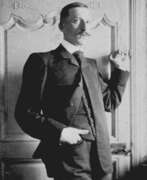

André Derain was a French artist, renowned as a painter, sculptor, and a pivotal figure in the development of Fauvism alongside Henri Matisse. Born on June 10, 1880, in Chatou, Yvelines, just outside Paris, Derain's artistic journey began in his youth. Despite initially studying to become an engineer, his passion for art led him to the Académie Julian and to acquaintances with notable artists like Matisse and Maurice de Vlaminck.
Derain's work, especially his paintings, is celebrated for its vibrant, expressive use of color and innovative compositions. His contributions to Fauvism, a movement characterized by the use of bold, non-naturalistic colors, marked a significant shift in the art world. The Fauvist period, particularly his collaboration with Matisse in the summer of 1905 in Collioure, culminated in works that were distinguished by their startling hues and wild brushwork, earning them the nickname "the wild beasts" or "les Fauves."
A notable period in Derain's career was his time in London in 1906, commissioned by art dealer Ambroise Vollard. His London series, including views of the Thames and Tower Bridge, are celebrated for their unique perspective and use of color, differing significantly from the traditional depictions of the city by artists like Whistler or Monet. These works stand out for their Pointillist influence and the effective conveyance of light and movement.
Derain's artistic evolution continued as he experimented with Cubism and was influenced by African art, as seen in his primitivist woodcuts for Guillaume Apollinaire's book "L'enchanteur pourrissant" (1909). His career, however, was not without controversy, particularly during World War II, when he was perceived as a collaborator due to his interactions with the Germans.
Despite the challenges and transformations in his career, André Derain left an indelible mark on the art world. His works are held in prestigious collections worldwide, including the Musée Cantini in Marseille and the Musée d'art moderne de Troyes. Derain's contribution to modern art, particularly through Fauvism, remains a subject of admiration and study among art collectors and experts.
If you're captivated by the artistic journey and pioneering spirit of André Derain, don't miss the opportunity to stay updated on his legacy. Sign up now to receive exclusive alerts on new product sales and auction events related to André Derain's work. Embrace your passion for art and culture, and ensure you're always informed about the latest offerings and unique pieces linked to this iconic artist.
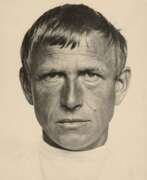

Wilhelm Heinrich Otto Dix was a German artist whose work stands as a stark, unyielding reflection of the societal tumult and trauma of the early 20th century. Born in 1891 in Untermhaus, Germany, Dix's early life was steeped in the arts, his ambition to become an artist nurtured by both familial influence and formal education in Dresden. His experiences as a soldier in World War I deeply influenced his artistic direction, leading him to vividly depict the horrors of war and the decay of the Weimar Republic with a brutal realism that became his signature style.
Dix's association with the Dada movement and the New Objectivity (Neue Sachlichkeit) further honed his critical, often cynical portrayal of post-war society. His works, such as "The Trench" and "War Cripples," expose the visceral aftermath of conflict, while his engagement with the Dadaists imbued his art with a disruptive, confrontational energy against societal norms and the art establishment.
Perhaps most notable is Dix's ability to capture the psychological depth and societal critiques through his portraits and landscapes, which ranged from the grotesque to the surreal. Paintings like "Portrait of the Journalist Sylvia von Harden" and the triptychs "Metropolis" and "War" are emblematic of his keen observation and stark depiction of the era's social and political unrest.
Despite facing significant adversity, including being labeled a degenerate artist by the Nazi regime and facing professional and personal setbacks, Dix's legacy as a painter and printmaker endures. His works are not only historical documents but also profound reflections on humanity, war, and society, resonating with collectors and art experts alike.
For enthusiasts of culture, art, and history, Dix's oeuvre offers an unflinching look into the human condition under the strain of societal and political upheaval. His contributions to painting and printmaking continue to be celebrated in museums and galleries worldwide, underscoring the enduring relevance of his work.
For those interested in exploring the profound depth and historical significance of Otto Dix's work, signing up for updates on new product sales and auction events related to his art can provide invaluable insights. This subscription is a gateway to staying informed about opportunities to engage with the tangible pieces of Dix's enduring legacy.
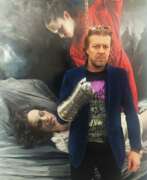

Martin Eder is a German artist.
From 1986 until 1992, he studied at the Augsburg University of Applied Sciences, and from 1993 until 1995 continued his studies at the Academy of Fine Arts Nuremberg, attending the University of Kassel in 1995 and 1996. From 1996 until 1999 he studied under Eberhard Bosslet at the Dresden Academy of Fine Arts and was a master student under Professor Bosslet from 1991 until 2001. Eder lives and works in Berlin. He plays in his own experimental rock band under the name Richard Ruin et Les Demoniaques.
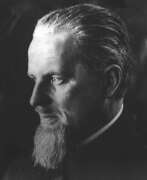

Ivan Semyonovich Efimov (Russian: Иван Семёнович Ефимов) was a Russian and Soviet artist of the first half of the twentieth century. He is known as an animal painter, graphic artist, sculptor, illustrator and reformer of the puppet theater.
Ivan Efimov worked in different genres and techniques, but all his work, including decorative and applied art, was focused on animalistic themes. He created works for the Moscow subway, train stations, sanatoriums and many other places and became famous for his technique of through volume relief in sculpture. The master also illustrated more than 20 books.
Efimov also created erotic works - about a thousand sheets with various thematic series, but the public learned about them only after the collapse of the USSR.
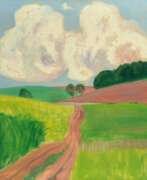

Kaj Ejstrup was a Danish artist, illustrator and sculptor. Above all, he is remembered for the landscapes he painted in the north west of Zealand as a member of the artists' colony known as the Odsherred Painters. In 1932, he was one of the founding members of the Corner artists association. Much of his work can be seen at Odsherreds Museum of Art.
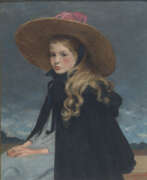

Henri-Jacques-Edouard Evenepoel was a Belgian artist whose most important works are associated with Fauvism. The artist debuted a portrait of his cousin (Louise in Mourning) at the 1894 Salon des Artistes Français. He showed four portraits at the Salon du Champ-de-Mars in 1895 and continued to exhibit there until his death. His first solo exhibition came at the Brussels Cercle Artistique (December 1897 – January 1898). Family and friends were the artist's preferred subjects; his full-length portraits, often against a neutral background, show the influence of Édouard Manet and James Abbott McNeill Whistler. His Parisian scenes were influenced by Henri de Toulouse-Lautrec and Jean-Louis Forain. Though his early scenes had a somber palette, his paintings while in Algeria (where he first wintered during his solo exhibition) were very different in style, anticipating the bold colours of Fauvism (e.g., Orange Market, Blidah).
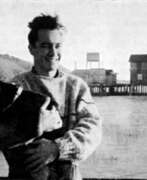

Esteban Fekete was a Hungarian, German, and Argentine painter. He worked and experimented in different techniques - color woodcuts, oil paintings on canvas, wood or organelite. In his paintings we see the world of people, animals and their environment.
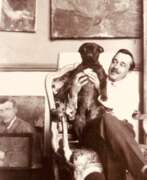

Serge Férat, born Count Sergei Nikolaevich Iastrebtsov (Russian: Сергей Николаевич Ястребцов), was a Russian and French avant-garde artist, painter, graphic artist and scenographer.
Sergei Iastrebtsov was born into a Moscow noble family, studied at the Kiev Art School, and in 1902 moved to Paris and entered the Académie Julian in Paris. In France, he first took the pseudonym Alexander Rudnev, and then began to sign his works with the name Serge Ferat. In the magazine Les Soirées de Paris he signed his publications with the pseudonym Jean Cérusse.
In 1910, Ferat began working on still lifes, combining the techniques of cubism with the warm colors of Russian folklore. Until the 1920s, Serge Fera painted in the style of Picasso's cubism, and on glass. Serge Ferat knew and was friends with many contemporary European artists, including Guillaume Apollinaire and Amedeo Modigliani. In the surrealist production of Apollinaire's play Mamelles de Tirésias (Théâtre René Mobel, Montmartre), he contributed to the set and costume design.
Ferat was engaged in book graphics and scenography, was a member of the group "Golden Section", and collaborated with the Russian magazine "Blow". In 1949 he took part in the design of the anthology Poetry of the Unrecognized, and in 1953 his works were exhibited at the Great Exhibition of Cubism at the Museum of Modern Art in Paris.


Maria Paula Figueiroa Rego was a Portuguese-British visual artist known particularly for her paintings and prints based on storybooks. Rego's style evolved from abstract towards representational, and she favoured pastels over oils for much of her career. Her work often reflects feminism, coloured by folk-themes from her native Portugal.


Michel Fingesten, a Czech-Austrian artist of Jewish origin, was an important graphic artist and designer of 20th century bookplates. In the world of bookplates he is often compared to Picasso, and he embarked on a varied artistic career.
Fingesten studied at the Academy of Fine Arts in Vienna, travelled the world and refined his craft in Munich. In 1913 he settled in Berlin and devoted himself to etching. In his private life he married and became a father, while his art flourished with contributions to silent films and over 500 bookplates. Fleeing Nazi persecution, he settled in Italy in 1935, but was interned there. After liberation, he returned to painting and died in Cerisano, Calabria in 1943.
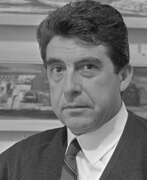

Salvatore Fiume is an Italian artist known for his diverse talents including painting, sculpture, ceramics and graphic design.
Salvatore Fiume's artistic style has evolved throughout his career, reflecting various influences. Fiume's paintings are characterised by vivid colours, dynamic brushwork and a sense of emotional intensity. He was also a skilled sculptor and created many sculptures in different materials.


Fritz Fleer is a German painter and sculptor. He studied at the Hamburg University of Fine Arts in the class of Edwin Paul Scharf.
As independent artist, Fritz Fleer has been creating works for urban planning since the 1950s; in Hamburg he was commissioned for 17 sculptures by the municipal housing company SAGA.
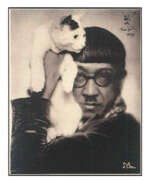

Tsugouharu Foujita was a French twentieth-century artist of Japanese descent. He is known for his unique style, combining elements of Japanese painting and printmaking with European realism.
Foujita created a wide range of works in a variety of genres, including nudes, images of cats, portraits of women and children, and self-portraits. He later converted to Catholicism and began creating paintings with religious themes. The artist was internationally recognized, and his work was exhibited in many countries around the world. His work was characterized by the perfection of pictorial technique, virtuosity of drawing and an atmosphere of sophistication. The master also showed talent in graphics, photography, ceramics, theater, cinema and fashion design. Prices for his paintings were comparable to those of Picasso's works.
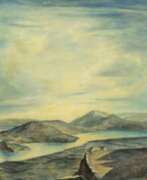

Sepp Frank was a German painter, glass painter, etcher and graphic artist.
He studied at the Munich Academy of Fine Arts. Frank went on numerous study trips early on to further his education. He soon turned to graphics and is still known today for his numerous bookplates. He lived for several years in Neustadt an der Aisch, where there is a large painting of Prince Regent Luitpold in the town hall.
In addition to portrait painting, another field of activity was stained glass.


Edvard Frank was a German painter of the "lost generation".
He began his training in 1926 at the Trier School of Crafts and Applied Arts with August Trümper, then studied at the Cologne Werkschulen with Richard Seewald, and moved to the Academy in Berlin to study in Karl Hofer's class. After being called up for military service, he probably injured himself. At the end of the war he evaded another call-up by deserting. At the end of the war he lived in the district town of Birkenfeld in Hunsrück until the mid-1950s. Here he produced a large number of drawings and watercolours, which he was reluctant to give up. After the war he became a co-founder of the Palatinate Secession, and in 1946 a member of the New Darmstadt Secession as well as the Arbeitsgemeinschaft bildender Künstler am Mittelrhein, founded in 1948. He enjoyed increasing success with exhibitions at the Städtische Kunstsammlung Baden-Baden as well as in Hamburg, Lübeck, Berlin, Karlsruhe, Mannheim, Mainz and Kaiserslautern. The Brücke painter Erich Heckel appreciated his work. His estate, which includes personal documents and correspondence as well as sketchbooks and photographs of his works, is preserved in the Landesarchiv Saarbrücken.
Frank's preferred subjects were often erotic and oriented towards classicist motifs.
Edvard Frank was a member of the Deutscher Künstlerbund.
Translated with www.DeepL.com/Translator (free version)
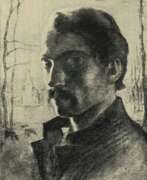

Robert Lvovich Genin (Russian: Роберт Львович Генин) was a Jewish-born artist of the first half of the twentieth century who worked in several countries, including the Russian Empire, Germany, France, Germany, Switzerland, and the USSR. He is known as a painter and graphic artist.
Robert Genin worked in a variety of genres including landscapes, portraits, genre compositions and nudes. He also did lithography, woodcuts and etching. His style evolved from Jugendstil and Symbolism in the early 1900s to Expressionism after the First World War. He later came to a kind of lyrical primitivism. The artist worked in both easel and monumental painting and was influenced by various artists.
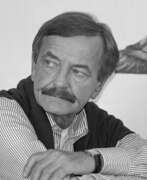

Rolf Gith is a German painter, draughtsman and designer. He studied painting at the University of Fine Arts in Hamburg. He was involved in teaching at various institutions of higher education. Git is a member of the Association of German Artists.
Rolf Git worked in different genres: he was fond of nudes, painted portraits of the people around him as well as numerous self-portraits. Since 1996 colour and light have been central themes in his work.


Grigory Efimovich Glukman (Glikman) was a Russian-American graphic artist.
In the 1930s Grigory Glukman was mainly engaged in easel painting. At that time, his main subjects were scenes from Parisian street life, landscapes, portraits, and nudes. In 1941 he emigrated to the USA.
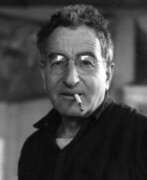

Willy Leopold Guggenheim, known as Varlin, was a Swiss painter. His figurative work emphasized the fragility of everyday life.
Varlin was friends with Hugo Loetscher and Friedrich Dürrenmatt, and painted them.
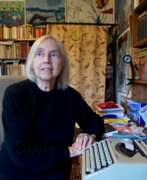

Aldona Maria Gustas is a German poet, illustrator, and graphic designer of Lithuanian origin.
In 1972, Gustas co-founded an art forum in West Berlin, the Berliner Malerpoeten, a group of artists who simultaneously wrote and illustrated their works.
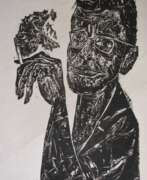

Karl-Heinz Hansen-Bahia, born in 1915 in Hamburg, Germany, was a multi-faceted artist whose work spanned various mediums, including woodblock prints, painting, sculpture, and filmmaking. His artistic journey began in earnest after World War II, with his first woodcut created in 1946. His early work, heavily influenced by the renowned artist Dürer, focused on religious scenes, showcasing his intricate and expressive style.
In 1949, Hansen-Bahia emigrated to Brazil, a move that profoundly influenced his artistic style and career. He taught art in São Paulo and later moved to Salvador Bahia, where his first exhibitions in the country were held. His work during this period began to reflect more of his adopted country's influence than his German origins, leading to a distinctive style that contributed to his prominence as a post-war German artist.
Hansen-Bahia's connection to Germany remained strong despite his move to Brazil. He returned briefly to Germany but later accepted a professorship at the Art Academy in Addis Ababa, Ethiopia. After gaining Brazilian citizenship, he continued to exhibit his work internationally, including in Europe, Japan, and the Americas. His importance in the Brazilian art scene was significant, as he became known for his portrayals of the people and landscape of the state of Bahia.
His artistic legacy was celebrated in extensive retrospectives held in Germany in 1971-72, which were among the last before his death in Brazil in 1976. Hansen-Bahia's work is a testament to his versatility and ability to adapt and evolve his style in response to his changing environments and experiences.
To stay informed about Karl-Heinz Hansen-Bahia, collectors, auctioneers, and art experts are encouraged to sign up for updates. These updates will provide information about new product sales and auction events related to Hansen-Bahia's art.


Bernhard Hasler was a German modernist painter. He was known for his expressionist paintings, especially portraits and nudes.
Hasler's work is characterized by the use of bold colours and thick, expressive strokes. He often painted portraits of friends and family. His work is marked by an emotional intensity and an exploration of the human condition.
Hasler's work can be found in many public and private collections, including the National Gallery in Berlin and the Museum of Modern Art in New York. He is considered one of the leading expressionist artists of his generation in Germany.
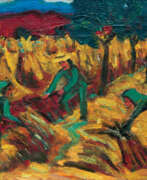

Walter Helbig is a German and Swiss painter, graphic designer and woodcarver. He works in Dresden on church paintings. Helbig participated in the founding and first exhibition of the "Neue Secession" in Berlin in 1910. Helbig took part in the first Modern Bund exhibition in 1911 in Lucerne and in the second, larger one, at the Kunsthaus in Zurich. In 1914, some painters from the vanished “Modern Bund”, including Helbig, took part in the first Dada exhibition at the Galerie Coray in Zurich. Helbig is also represented in the third Dada exhibition and contributes to the magazine Der Zeltweg 8 but does not participate in the activities of the Dadaists. In 1919, he was one of the signatories of the “manifesto of radical artists” 9 in Zurich, and joined the “November group” in Berlin. Helbig lived in Zurich from 1916 to 1924 and in 1916 became a member of the GSMBA (Society of Swiss Painters, Sculptors and Architects), in which he regularly participated. Since the First World War, his artistic work has turned to religious and mythical subjects. In 1924 Helbig, like many other artists, moved to Ascona due to the low cost of living and founded the movement Der Große Bär. During this time, Helbig painted landscapes, still lifes and portraits. Walter Helbig had his first major solo exhibition in Zurich in 1948 and became a member of the Association of German Artists in 1952. After the Second World War, he also followed the artistic currents of the time, abstract expressionism and experimented with informal art in the 1960s.


Josef Herman was a Polish-British graphic artist, impressionist, and member of the Royal Academy of Arts. Herman's own style was bold and distinctive, with strong forms and minimal detail. He became famous for his depictions of miners, fishermen, and farmers, painting the modest, quiet beauty of the British working class in the postwar period. Herman also painted still life and nudes. His works are mostly in ink, watercolor, and pastel in dark, somber tones.


Ernst Georg Heussler was a Swiss painter, graphic designer and sculptor.
A versatile artist, Heussler worked in many techniques - prints and woodcuts, oil and watercolor, and large-scale murals. He painted Art Nouveau portraits and graphic still lifes, nude paintings and abstract landscapes.
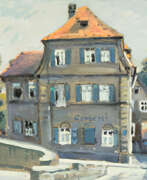

Norbert Hochsider was a German painter and graphic artist. His artistic style was influenced by the German Expressionist movement that emerged at the beginning of the 20th century. Expressionism was characterised by an emphasis on subjective emotion, distorted forms and intense colours. Artists associated with this movement sought to convey their inner feelings and the psychological impact of the modern world.
Norbert Hochsider explored a wide range of subjects in his paintings, including landscapes, figures and still lifes. He has used bold brushes, vibrant colours and dynamic compositions to express his emotional response to the subject matter. His works often reflect intensity, energy and raw emotion.


Carl Horn was a German artist of the first half of the 20th century. He is known as a painter and graphic artist who specialized in nudes, landscapes and portraits.
Horn created many exlibris in the Art Nouveau style early in his career. He painted city and seascapes, genre scenes and portraits using watercolor and oil. His work was characterized by lyrical realism and a sensitive, harmonious and richly colored palette. Horn was also the director of the Nordic Academy of Art in Bremen.


Alain Jacquet is a French self-taught artist, a representative of the American Pop Art movement. In his series of works "Camouflages" the artist often contrasts masterpieces of art history, famous paintings of the past to advertising idols of his time. "Botticelli's Camouflage" (Birth of Venus) is one of his famous works.
Among other things, Jacquet used the techniques of silkscreen printing, photomechanical transfer and screen printing.
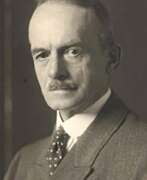

Angelo Jank was a German animal painter, illustrator and member of the Munich Secession. He was the son of the German painter Christian Jank and specialized in scenes with horses and riders. For many years, he was also employed as an illustrator for the magazines Jugend and Simplicissimus, And he was also an instructor at the Academy of Fine Arts. In addition to his canvases, he painted murals at the Justizpalast and scenes from history at the Reichstag building in Berlin. His work was also part of the painting event in the art competition at the 1936 Summer Olympics.


Paul Kayser was a German painter and graphic artist. After training as a painter-decorator, Kayser attended the Schools of Applied Art in Munich and Dresden.
Paul Kayser was a founding member of the Hamburg Artists' Club 1897 and the Hamburg Secession, and a member of the Hamburg Artists' Association and the Altona Artists' Association. His style was decisively influenced by Albert Marquet, whom Kaiser met in 1909.
In 1937, Kaiser's still life was confiscated from the museum in Husum as part of the Nazi "Degenerate Art" campaign.
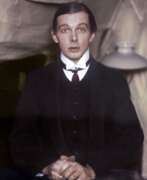

Ernst Ludwig Kirchner was a pivotal figure in the art world, known for his profound impact on 20th-century Expressionism. Born in Bavaria, Germany, on May 6, 1880, Kirchner's journey into art began with architecture studies before he found his true calling in painting and printmaking. In 1905, alongside fellow architecture students, he co-founded Die Brücke ("The Bridge"), a group that sought to revolutionize art by bridging the gap between traditional academic styles and modern artistic expression. This group was instrumental in the development of Expressionism, advocating for intense emotion conveyed through vivid colors and bold lines.
Kirchner's work, characterized by its expressive intensity and often exploring themes of urban life and the human psyche, reflects a deep engagement with the cultural and social upheavals of his time. Notably, his experiences during World War I, including a mental breakdown and subsequent discharge from military service, deeply influenced his art. Works like "Self-Portrait as a Soldier" (1915) poignantly encapsulate the personal and societal trauma of the era.
After the war, Kirchner sought solace in Davos, Switzerland, where the tranquil landscapes inspired a new direction in his work, showcasing a more serene and reflective approach. Despite his contributions to modern art, Kirchner's later years were marred by the Nazi regime's denunciation of his work as "degenerate," leading to the destruction and dispersal of many pieces. Tragically, this persecution contributed to his decision to end his life on June 15, 1938.
Kirchner's legacy is preserved through his influential body of work, from vivid urban scenes to tranquil landscapes, all marked by a distinctive, expressive style that continues to captivate art collectors and experts. His works are held in major museums worldwide, including the Museum of Modern Art in New York and the National Gallery of Art in Washington, underscoring his enduring influence on the art world.
For those interested in the profound impact of Ernst Ludwig Kirchner on modern art and Expressionism, subscribing to updates on new product sales and auction events related to his work can provide valuable insights. This subscription is an opportunity for collectors and art experts to stay informed about the availability of Kirchner's influential pieces and related events.
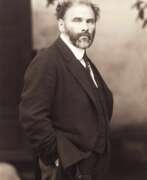

Gustav Klimt, an Austrian Symbolist painter, was a central figure in Vienna's Secession movement, known for his paintings, murals, sketches, and objets d'art. Born on July 14, 1862, in Baumgarten near Vienna, Klimt's early life was marked by financial hardship, but he showed artistic talent at a young age. He studied at Vienna's Kunstgewerbeschule, where he received a conservative education in architectural painting that influenced his early traditional works.
Klimt's path as an artist was evolutionary and controversial. Initially a successful painter of architectural decorations, his style evolved into a more personal and controversial form, especially after public criticism of his works for the Great Hall of the University of Vienna in 1900, which were deemed pornographic. This turning point led him to abandon public commissions and begin the so-called "golden period," characterized by the use of gold leaf in his work. Some of his most famous paintings, such as The Kiss and Portrait of Adele Bloch-Bauer I, which demonstrate a combination of Byzantine influence and modern symbolism, belong to this phase.
An important aspect of Klimt's career was his participation in the Vienna Secession, an art movement he co-founded in 1897. This movement, which had no manifesto, aimed to showcase unconventional artists and to bring foreign artistic influences to Vienna. Klimt was its first president and participated in the creation of the periodical Ver Sacrum.
Despite his artistic fame, Klimt led a relatively withdrawn lifestyle, often working alone and maintaining discreet personal relationships. Nevertheless, his legacy remains strong: his works fetch high prices at auction and continue to be celebrated for their innovative style and symbolic depth.
For collectors and art experts, Klimt's work represents a fascinating exploration of the evolution of Symbolism and Art Nouveau. His unique approach to form, color, and subject matter makes his work highly valued and constantly relevant in the art world.
If you are interested in keeping up to date with sales and auction events related to the works of Gustav Klimt, we recommend signing up for updates. This will ensure that you don't miss the opportunity to own a piece of this remarkable artist's history.
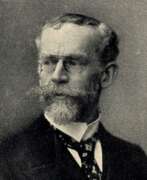

Karl Köpping was a German painter and engraver. He also designed objects of art made of twisted glass.
He mainly created etchings after the well-known works of the past centuries, especially by Rembrandt, but also Hals, Gainsborough or Munkácsy. He also designed Art Nouveau art objects made of coiled glass.
He was awarded the Order of the Legion of Honour and the First Class Medal of the Munich Art Exhibition, as well as the Grand Prix of the Paris World's Fair in 1889.


Alfred Kornberger was an Austrian painter and graphic artist. He studied painting with Professor Robin Christian Andersen at the Academy of Fine Arts in Vienna.
Stylistically, he dealt with the different facets of classical modernism and was inspired by Pablo Picasso's late work as well as by the depictions of surrealist artists. In his early years he devoted himself to various themes from the world of industry as well as topographical depictions. Later he turned almost exclusively to the depiction of the female nude.
Alfred Kornberger's work is part of the great Austrian tradition of body-oriented art, which ranges from Egon Schiele to Alfred Hrdlicka. His central theme, the female nude, is not only a projection of sensual desire but also an expression of psychological states.
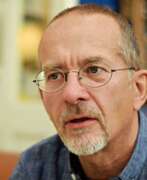

Axel Krause is a German painter and graphic artist who works with acrylics and oils, typical of the artists of the New Leipzig School. In his paintings the viewer sees interiors, landscapes and atmospheric scenes and subjects with elements of mystery and surrealism.
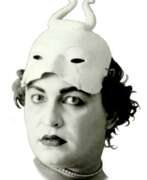

Viktor Aleksandrovich Kuznetsov (Russian: Виктор Александрович Кузнецов) is a Russian artist, photographer and graphic artist.
He lives and works in St. Petersburg. In 1993-2005 years with the artist Oleg Maslov, together they painted a series of large canvases "Blue Lagoon", where he became famous.


Fernand Lantoine is a French painter and draughtsman, often associated with the Belgian School.
Without adhering to all the artistic innovations of his time, he constantly developed his painting technique.
This evolution is related to the deep need for renewal in European societies, highly civilised and industrialised but scarred by the horrors of war.
A close friend of Paul Signac, he moved from the neo-impressionist movement with divided brushstrokes and bright, almost fauvist tones, to a symbolist inspiration close to Henri Martin, before opting for a style marked by the pre-eminence of line and structure over colour.
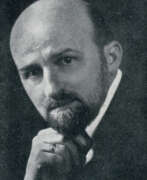

Ernst Liebermann was a German painter who was born in 1869.Ernst Liebermann's work has been offered at auction multiple times, with realized prices ranging from 16 USD to 7,906 USD, depending on the size and medium of the artwork. Since 2002 the record price for this artist at auction is 7,906 USD for The white Rose, sold at Stahl Auction House in 2021.
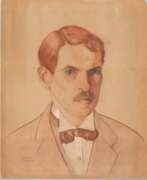

Sergey Ivanovich Lobanov (Russian: Сергей Иванович Лобанов), a Russian painter born in 1887 and whose legacy extended until 1942, is renowned for his captivating landscapes and insightful portraiture. Lobanov's artistry is marked by his adept use of color and form, capturing the essence of the Russian landscape and the soul of its people. His contributions to Russian art are notable, with several works like "River Rapids, 1922" and "View of Justinian's Tower, Feodosia, 1926" highlighting his mastery in landscape painting. These pieces, among others, demonstrate Lobanov's unique ability to blend realism with a sense of the mystical, making the mundane majestic.
Lobanov's career was interspersed with significant accomplishments, including his involvement with the "Jack of Diamonds" group, an avant-garde artists' association. Additionally, his role as a curator and senior curator for the first State Museum of New Western Painting (GMNZh) in the early 1920s underscores his influence beyond the canvas. This period was marked by his dedication to documenting and promoting art, as well as creating it. Lobanov's work during this time not only contributed to the preservation of art but also to the cultural heritage of Russia.
His art continues to be celebrated for its contribution to the Russian avant-garde movement, capturing moments of Russian history and landscape with a vividness that speaks to the depth of his artistic vision. Lobanov's works are a testament to his skill, passion, and the intricate relationship between artist and environment.
For collectors and experts in art and antiques, Sergey Ivanovich Lobanov's oeuvre offers a glimpse into the soul of Russia through its landscapes and historical moments. We invite you to sign up for updates on sales and auction events related to Sergey Ivanovich Lobanov, ensuring you stay informed about opportunities to own a piece of Russian art history.
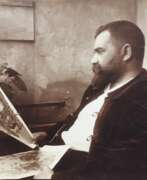

Emil Maetzel was a German architect, painter, graphic artist and sculptor.
In 1919, Maetzel was a co-founder of the Hamburg Secession, an organisation promoting modern art in northern Germany. He was also a member of the November Group, an association of expressionist artists in Berlin.
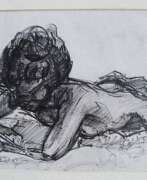

Johann Baptist Maier was a German commercial artist and painter. In 1905 he was a prize winner in a competition for advertising designs for joint advertising by the entrepreneurs Ludwig Stollwerck and Otto Henkell. Maier designed a number of covers for the magazine Die Dame and the 1922 book calendar. Maier worked in Munich from 1909 to 1942. He was a member of the second group The Six and the New Association of Munich Poster Artists. Johann Baptist Maier designed posters for the Marco Polo Tee, for the Kieler Herbstwoche, for the Fliege Blatter, Sporthaus Schuster Munich, among others. Between 1906 and 1925 he supplied almost 700 drawings for the Meggendorfer-Blätter.
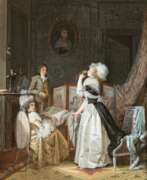

Jean-Baptiste Mallet was a French painter in the Troubadour style.
His style shows the strong influence of Jean-Baptiste Greuze, Jean-Honoré Fragonard (also from Grasse) and Louis Léopold Boilly. He is also known to have studied 17th-century Dutch painting.
Most of his works were gouaches and watercolors, done in relatively small formats, and consist largely of genre scenes depicting life under the Directorate and the First Empire.
His paintings were very popular and are an indispensable source of information about interior decorations and furnishings of the period. Most of his works were also available as prints.
Outside of France, his works may be seen at the National Gallery of Art and LACMA.


Filipp Andreevich Malyavin (Russian: Филипп Андреевич Малявин) was a Russian artist whose journey from a novice in a monastery to a renowned painter in Europe is as vibrant and eccentric as his artworks. Born into a poor peasant family in the village of Kazanka, Samara province, Malyavin's early fascination with art propelled him from creating clay figurines and drawings in his village to studying under the tutelage of Ilya Repin at the Saint Petersburg Academy of Arts. His unique approach to painting, characterized by large canvases, the bold use of the color red, and dynamic brushstrokes, distinguished his work from his contemporaries.
Malyavin's most notable early works include "Peasant Girl Knitting a Stocking" and "Laughter," the latter of which, despite initial criticism for its unconventional portrayal of Russian women, earned him a gold medal in Paris and was acquired by the Museo d'arte moderno in Venice. His portraits, such as those of Baroness Wolf and Mme. Popova, along with his depiction of peasant life, brought him fame both in Russia and abroad.
His art reflects the rich colors and patterns of the traditional clothes of the Kazanka peasants, bringing a sense of cheerfulness and vitality that transcended the somber reality of peasant life. His work "Three Babas" exemplifies this style, capturing the women in vibrant attire against a rural backdrop, conveying a sense of nostalgia for his homeland after his emigration in 1922.
For collectors and experts in art and antiques, Malyavin's works offer a unique glimpse into the soul of Russian peasant life, infused with an exuberance and color that set them apart from the works of his peers. His pieces, such as "Whirlwind," "Laughter," and "Peasant Women," are celebrated for their distinctive style and emotional depth, making them valuable additions to any collection.
To stay updated on sales and auction events related to Filipp Andreevich Malyavin, sign up for updates. This subscription will ensure you're the first to know about new opportunities to acquire pieces by this distinguished artist, whose work captures the spirit of Russian culture with unparalleled vibrancy and emotion.
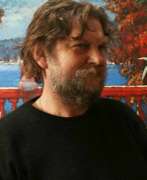

Adam Marczukiewicz is a Polish painter and graphic artist working in Krakow.
He graduated from the Academy of Fine Arts in Krakow at the Faculty of Graphic Arts, a member of the Association of Polish Artists.
Marczukiewicz works in different genres, but he has one recurring motif - prickly cacti. His paintings depict real events and views in a grotesque vision and are painted in rich vibrant colors.
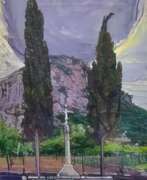

François Maret, also known as Frans van Ermengem or Frans Ermengem, was a Belgian poet, painter and art critic. He was recognized for his role as an editor at the Tribune dramatique and his unwavering support for General Franco during the Spanish Civil War.
Maret translated Dutch art criticism works and authored poetry volumes, often illustrating them under a pseudonym. Additionally, he created new illustrations for books by Charles Baudelaire and Charles van Lerberghe.


Mania Mavro was a French artist and graphic artist of Russian origin. Her real name is Maria Dmitrievna Mavro-Biazi. She worked in the genres of nude, portraiture, landscape and still life. She travelled extensively in France and Italy.


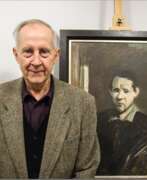

Harald Metzkes is a German painter and graphic artist.
In 1976 he won the Käthe Kollwitz Prize from the Arts Academy of East Germany and state-level official recognition in the form of the Banner of Labor. The next year his work was the focus of an exhibition at the National Gallery in (East) Berlin, "Harald Metzkes – Two decades of Pictures". 1976 was also the year in which he was a recipient of the National Prize of East Germany for illustrations and graphic art. In 1984 and 1988 Metzkes participated in the Venice Biennale.
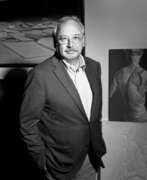

Reinhard Minkewitz is a German graphic artist and draftsman.
He graduated from the Academy of Fine Arts in Leipzig, lives and works in this city.
The figurative artist Minkewitz works on large format paintings, in addition he creates sculptures, ceramics, art prints and also collaborates with the Meissen porcelain manufactory.
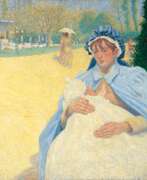

George Morren or Georges Morren was a Belgian painter, sculptor, Impressionist and engraver. The painter and friend of the family Emile Claus who taught him and his brothers several times a week served as his first mentor. He began working in an Impressionist style. In the summer of 1892, eschewing the shortened painting process which was associated with Neo-Impressionism, he began to work in a more spontaneous manner, creating more space for emotions. He became one of the most eager admirers of the French Impressionists. After three years in Paris he returned to Antwerp where he participated in several avant-garde groups. Morren created light-flooded paintings, exhibited at the fairs La Libre Esthétique in Brussels, the 'Vie et Lumière', and at numerous international exhibitions. Towards 1913, he entered a new creative period. The colors in his new works were more subdued. He used grated rough pigment and pastels. Morren remained faithful to impressionist ideals and did not participate in new trends, such as Cubism or Expressionism. He dealt with the scenes of everyday life, interiors, still lifes, landscapes and portraits. His palette became darker and his paintings developed a solemnity and clarity of expression.
